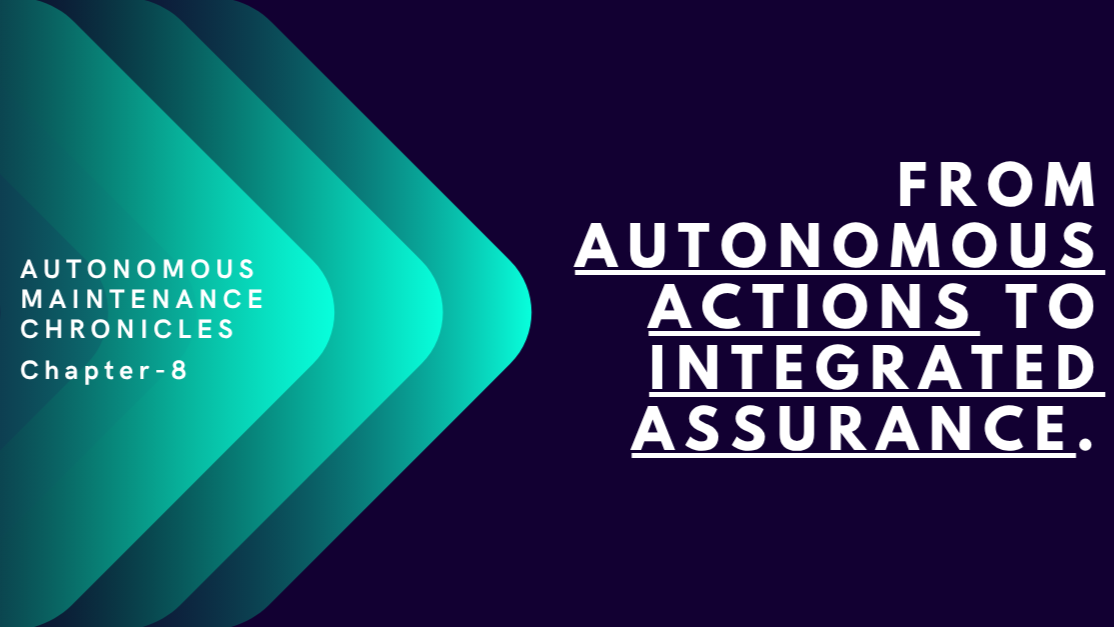
Published on :
When we first started building toward autonomous maintenance, the vision was clear—create a system that minimizes human intervention for as much of the maintenance lifecycle as possible, from detection to diagnosis to decision. The guiding principle was this:
By the time someone picks up a wrench, everything else should have already been intelligently handled.
And over the last 3–4 months, we've seen that vision deliver in the real world. We've applied this across 25,000+ assets, avoided critical failures, cut energy waste, and streamlined triage across thousands of maintenance events. The concept of autonomous maintenance wasn't just validated—it produced significant, tangible outcomes.
But here's what we've learned along the way.
Spending the last six weeks in the UK—on the ground with FM teams, walking sites, sitting in review meetings, and mapping workflows—has been transformative. Not because autonomous maintenance wasn't working, but because we discovered how much more it could become.
What we found was that autonomous maintenance naturally evolves into something bigger: an Autonomous Maintenance Operations Center that connects every stakeholder in the facilities ecosystem.
The real learning? Getting operations and different stakeholders within operations to be connected with autonomous maintenance unlocks exponential value. When you bring together:
The autonomous maintenance foundation becomes the operational intelligence hub that every stakeholder needs.
This isn't about moving away from autonomous maintenance—it's about recognizing that autonomous maintenance is naturally positioned to become the Autonomous Maintenance Operations Center that connects all operational stakeholders.
We've started calling this Integrated Operational Assurance.
Here's how the same autonomous maintenance setup expands to drive broader outcomes:
✅ Detection becomes stakeholder orchestration The system doesn't just flag anomalies—it simultaneously validates compliance policies, checks financial thresholds, assesses workforce availability, and evaluates lifecycle implications.
✅ Triage becomes intelligent coordination Work orders are scheduled based on engineer availability, asset criticality, SLA timing, compliance requirements, and financial impact—connecting every stakeholder's priorities in real time.
✅ Execution generates multi-stakeholder value Every task creates audit trails for compliance, billing documentation for finance, resource utilization data for workforce planning, and lifecycle insights for asset management.
✅ Outcomes feed organizational intelligence Actions today inform compliance reporting, financial planning, workforce optimization, and Capex strategy—turning maintenance into an organizational learning system.
This transformation happened faster than we expected. Within just three months of getting started, and six weeks of deep customer engagement in the UK, we've seen how the same autonomous maintenance foundation can connect stakeholders and drive outcomes across the entire facilities operation.
The key insight: autonomous maintenance isn't just about maintenance—it's about creating the operational intelligence backbone that every facilities stakeholder needs.
We're learning that when you get operations and different stakeholders within operations connected to autonomous maintenance, you don't just automate tasks—you create an operations center that thinks, learns, and optimizes for the entire organization.
Here's the vulnerable truth: we don't know what all we're going to be learning in this journey.
The entire idea behind these Autonomous Maintenance Chronicles has been to share openly—to be vulnerable with our team, our customers, and every stakeholder about what we're discovering in real time. I'm sure in a few weeks we'll have a more evolved version of this thinking, and in a few months, we'll probably look back at this post and see gaps we couldn't even imagine today.
But here's what remains constant through all this learning: first principles thinking plus relentless focus on the customer and the end outcomes they want. That's not changing. That's the one thing we are absolutely proud of in the work we're doing.
Whether we're building autonomous maintenance foundations or evolving toward Autonomous Maintenance Operations Centers, we start with: What does the customer actually need? What outcomes are they trying to achieve? How do we think from first principles to get there?
This journey is messy, uncertain, and full of discoveries we haven't made yet. But it's grounded in something solid: genuine commitment to customer outcomes and principled thinking about how to deliver them.
Autonomous maintenance remains our foundational commitment. But we're now building toward something even more powerful: Autonomous Maintenance Operations Centers that serve as the intelligent backbone for entire facilities ecosystems—and we're learning what that means as we build it.
Let's push the conversation forward—and share what we're discovering along the way.
#AutonomousMaintenance #OperationalAssurance #WorkflowIntelligence #FMInnovation #DigitalFM #AIinFM
Lorem ipsum dolor sit amet, consectetur adipiscing elit, sed do eiusmod tempor incididunt ut labore et dolore magna aliqua. Ut enim ad minim veniam, quis nostrud exercitation ullamco laboris nisi ut aliquip ex ea commodo consequat. Duis aute irure dolor in reprehenderit in voluptate velit esse cillum dolore eu fugiat nulla pariatur.
Block quote
Ordered list
Unordered list
Bold text
Emphasis
Superscript
Subscript
© Xempla. All rights reserved.